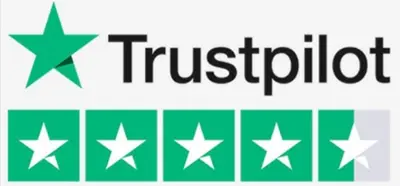Last updated on November 29th, 2024 at 02:36 pm
In the realm of blockchain technology, Ethereum has emerged as a prominent Decentralized Autonomous Organization (DAO). This article explores the features, benefits, challenges, and future potential of Ethereum as a DAO. Ethereum’s potential as a Decentralized Autonomous Organization (DAO) is unlocked. In addition, you must consider knowing about the Ethereum’s Beacon Chain.
Exploring the Benefits of Ethereum as a Decentralized Autonomous Organization
One of the key advantages of Ethereum as a DAO is enhanced security and trustlessness. Through the utilization of blockchain technology, Ethereum provides a secure and tamper-proof infrastructure for transactions and operations. By removing the need for intermediaries, such as banks or legal entities, Ethereum reduces the risk of fraud, censorship, and manipulation. Participants can engage in transactions with increased confidence, knowing that the rules and conditions are encoded in smart contracts and executed automatically, leaving no room for subjective interpretation.
Another significant benefit of Ethereum as a DAO lies in its ability to empower decentralized governance. DAOs enable collective decision-making, where stakeholders have a voice in shaping the direction and policies of the organization. Ethereum-based DAOs operate on a principle of inclusivity, allowing anyone with a stake or interest to participate in decision-making processes. This decentralized governance model not only fosters community engagement but also helps to mitigate the concentration of power that is often associated with centralized systems.
Furthermore, Ethereum’s DAO model opens up new avenues for innovation and economic models. Through the tokenization of assets and the development of decentralized finance (DeFi) applications, Ethereum offers opportunities for individuals to create, invest, and participate in new forms of financial systems. Decentralized applications (dApps) built on the Ethereum platform allow for the creation of diverse economic ecosystems, ranging from peer-to-peer lending platforms to decentralized exchanges. These innovations have the potential to disrupt traditional financial intermediaries and enable greater financial inclusivity, particularly for individuals who are unbanked or underserved by traditional banking systems.
The benefits of Ethereum as a DAO, however, do not come without challenges. Scalability remains a significant concern for the Ethereum network. As the popularity and usage of Ethereum increase, network congestion and high transaction fees have become hurdles that need to be addressed. Ethereum 2.0, an upcoming upgrade, aims to tackle these scalability issues through the implementation of a new consensus mechanism and shard chains. The success of Ethereum 2.0 will determine the network’s ability to handle a higher volume of transactions and support widespread adoption.
Challenges and Limitations of Ethereum as a DAO
One of the primary challenges faced by Ethereum as a DAO is scalability. As the Ethereum network grows in popularity and usage, it experiences network congestion and high transaction fees. This congestion can result in slower transaction processing times and increased costs for users. The scalability challenge arises from the limitations of Ethereum’s current architecture, known as Ethereum 1.0. Ethereum 1.0 relies on a proof-of-work consensus mechanism, which requires significant computational resources and limits the network’s capacity to process a large number of transactions simultaneously.
To address these scalability concerns, Ethereum 2.0 is being developed as an upgrade to the existing Ethereum network. Ethereum 2.0 will introduce a new consensus mechanism called proof-of-stake (PoS) and shard chains. PoS will replace the energy-intensive proof-of-work mechanism, allowing for greater transaction throughput and efficiency. Shard chains will enable parallel processing of transactions, further increasing the network’s capacity. The successful implementation of Ethereum 2.0 is crucial for Ethereum to overcome its scalability limitations and support the growing demand for decentralized applications and transactions.
Another significant challenge for Ethereum-based DAOs is navigating the regulatory and legal landscape. The decentralized nature of these organizations poses unique compliance challenges as they operate beyond traditional jurisdictional boundaries. Regulators worldwide are grappling with classifying and regulating cryptocurrencies, blockchain technology, and DAOs. The lack of clear regulatory frameworks can create uncertainty for Ethereum-based DAOs, making it challenging for them to operate within established legal frameworks. Compliance with anti-money laundering (AML) and know-your-customer (KYC) regulations, for example, can be particularly complex in a decentralized environment where user identities may not be directly linked to their Ethereum addresses.
Recent regulatory developments indicate a growing interest in regulating the cryptocurrency and blockchain space. Governments and regulatory bodies are exploring ways to strike a balance between protecting investors and fostering innovation. Ethereum-based DAOs will need to navigate these evolving regulations to ensure compliance while continuing to innovate within the boundaries of the law. Collaboration between industry participants, regulators, and policymakers is essential to create a regulatory environment that fosters growth, innovation, and consumer protection.
Conclusion
Ethereum’s evolution as a Decentralized Autonomous Organization presents a groundbreaking paradigm for decentralized governance and innovation. With its smart contracts, transparency, and tokenization capabilities, Ethereum has the potential to reshape industries and empower communities, heralding a new era of decentralized possibilities.

